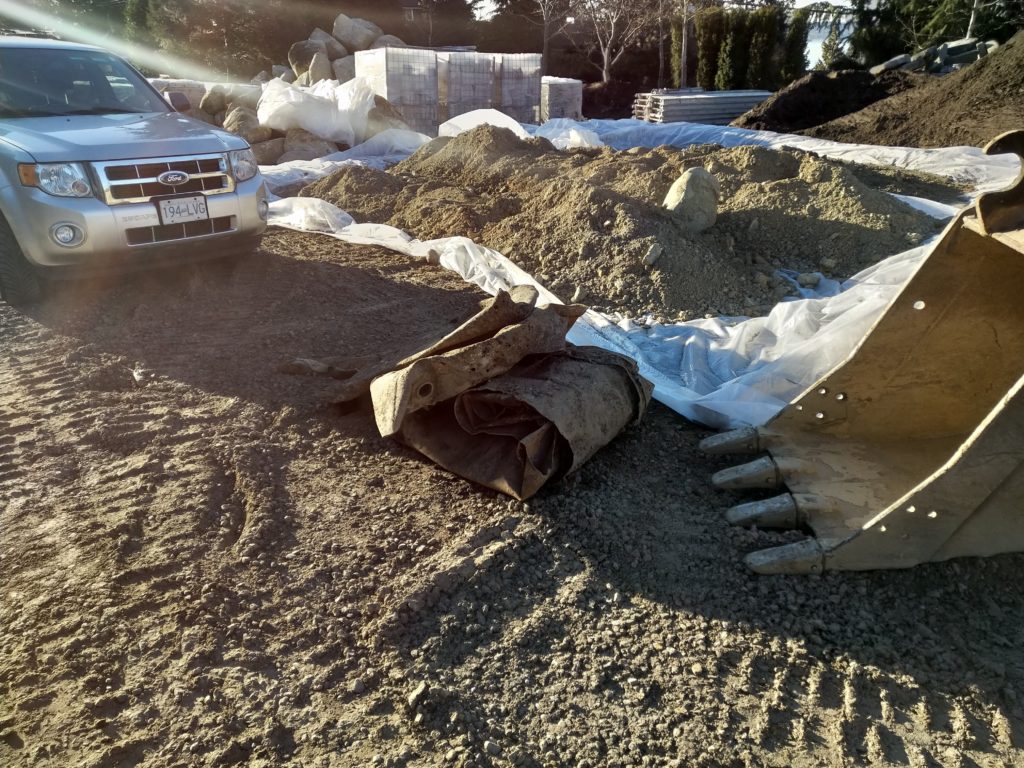Photo: In the photograph above, the UST in the centre of the frame. It has been crushed and rolled up, ready for transport to a metal recycler. Behind the UST, the contaminated soil has been stockpiled onto plastic sheeting. The soil is awaiting lab analysis. It will then be transported to a processing facility where the hydrocarbons will be burned off, likely in a kiln.
New Construction Project
EKAN Inspections is the Owner’s Representative on a new residential estate development. We started this particular construction project over a year ago in the Altamount district of West Vancouver. There was an existing house on the property that was over 80 years old. The house was to be torn down.
UST Survey
Prior to any demolition, a hazardous material survey must be completed. This is a provincial regulation. As part of the survey, a local contractor was employed to do a metal detector sweep of the house perimeter to locate any buried underground storage tank (UST) that may have been on the property. Properties of this vintage, in this geographic area, typically had an oil tank to store fuel their home heating furnace.
Survey Results
The UST survey came up negative. That is, no tank was discovered. It was a surprising result as a UST was expected. It may have been removed in the past.
Fast Forward
One year later, while the earthworks sub-contractor was excavating the parking area in front of the new garage, the excavator hit a buried metal tank or UST. Upon discovery, an environmental consultant was contacted to review the situation and provide a remediation plan. The tank was empty of hydrocarbons when exposed. The tank was excavated, taken out and crushed. The surrounding soil was removed and stockpiled. Soil samples were collected and sent for testing. Based on the lab analysis, the soil was then shipped to a hazardous material processing facility. The tank was sent to a metal recycler.
Lesson Learned
The UST was found on site in a location well away from the original house. However the District of West Vancouver had no records of either a tank on the property nor its removal. In summary, for any house built in the 1950’s or earlier, the lack of municipal documentation is no guarantee that the lot is free and clear of the UST. Further, the real estate Property Disclosure Statement may not accurate either.
Who’s responsible for costs?
In our case, upon discovery of the UST, we notified both the buyer’s and seller’s real estate agents. The remediation cost are being tracked. The responsibility for the clean-up has yet to be resolved.

